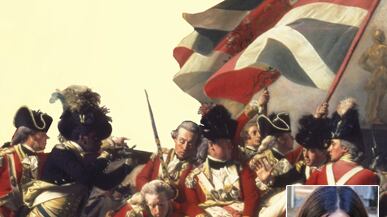When the British army and navy were forced to evacuate New York and other American cities in November 1783 after their defeat in the War of Independence, no fewer than 75,000 civilians left with them. These were the Loyalists who had supported George III in what had effectively been as much a civil war as a national liberation struggle. Although about one-quarter of all American colonists had decided to stay loyal to the king in 1776, after seven years of struggle only 3 percent of them were willing to go into lifelong exile sooner than live in the nascent American republic. This is their story.

The Harvard historian Maya Jasanoff has trawled the archives of all the major destinations where the Loyalists wound up, including Britain, Canada, the Bahamas, the West Indies (especially Jamaica), and Sierra Leone. Her biggest trove of documents proved to be the records of the Loyalist Claims Commission, which was set up to compensate Loyalists for their losses and reward them for their fidelity to the crown, which had often cost them all they owned. The result is the first comprehensive global history of the Loyalist diaspora. And it really is global; the British empire in India was partly won by the efforts of first- and second-generation Loyalists such as Benedict Arnold’s sons, and Freetown in Sierra Leone was founded by 1,200 black Loyalists. The first serious proposal to colonize Australia came from an American Loyalist.
What utter sadists those “heroes of liberty” were before the gentlemen of Virginia managed to establish control over the movement.
Jasanoff’s first of many revelations in this very well-researched and fluently written book, Liberty’s Exiles, is that, far from their demonization as mere well-heeled Tory stooges of the British who opposed the revolution because it hit their rent-rolls, in fact Loyalism “cut right across the social, geographical, racial and ethnic spectrum of early America—making Loyalists every bit as ‘American’ as their patriot fellow subjects. Loyalists included recent immigrants and Mayflower descendants alike. They could be royal officials as well as bakers, carpenters, tailors, and printers. There were Anglican ministers as well as Methodists and Quakers; cosmopolitan Bostonians and backcountry farmers in the Carolinas.” The revolution also split families; even Benjamin Franklin’s son William was a Loyalist.
Although Jasanoff does not put it in quite so stark terms, the Loyalists were people who opposed the anarchy that the revolution seemed to offer in its early stages, the tarring and feathering and the mob-rule exemplified by the Boston Tea Partiers’ despicable fancy-dressed hooliganism. They saw the opposition of Boston merchants—for whom, in many cases, read common smugglers—to pay their taxes as a glaring lack of gratitude for the massive debt that British taxpayers had incurred while protecting America during the French and Indian War. They also saw through the ludicrous attempt by Thomas Jefferson, John Adams, and others to portray the gentle, intellectual, and dignified King George III as some kind of European-style tyrant, especially when Americans paid an average of 6d in direct taxation per annum, one-fiftieth of the 25s Britons paid without hypocritically yelping about “liberty.” As for genuine liberties, such as that of conscience, Dissenters could operate in Britain without licenses, but not in some American colonies.

The treatment of the Loyalists by patriot mobs at the outbreak of the Revolution explains their decision to leave, sooner than attempt to integrate into a society that had so abused them. Among many other well-chosen examples, Jasanoff instances the case of Thomas Brown of Georgia in the summer of 1775, one of the 10 percent of America’s white population who had immigrated in the previous 15 years. When he refused to subscribe to the patriot mob’s demands that he abjure his anointed king, he was dragged to Augusta where, in the author’s words: “He is tossed to the ground, his arms lashed around the trunks of a tree. He sees his bare legs splayed out in front of him, and he sees hot brown pitch poured over them, scalding, clinging to his skin. Under his feet the men pile up kindling and set it alight. The flame catches the tar, sears his flesh. His feet are on fire, two of his toes charred into stubs. The attackers seize his broken head by the hair and pull it out in clumps. Knives take the care of the rest, cutting off strips of scalp, making the blood run down over his ears, face and neck. Half scalped, skull fractured, lamed, slashed and battered.”
What utter sadists those “heroes of liberty” were before the gentlemen of Virginia managed to establish control over the movement. In almost every revolution, the plebian extremists and torturers win control over the educated enlightened thinkers, but in the American Revolution exactly the opposite happened, thanks to an extraordinary concatenation of truly remarkable leaders. Yet the decision of Thomas Brown—who somehow survived his ordeal—and his compatriots to leave America was understandable. In general the Loyalists were brave, hardy, and admirable people who were simply caught on the wrong side of history, and Maya Jasanoff has written them a fitting tribute.
Historian Andrew Roberts' latest book, Masters and Commanders, was published in the U.K. in September. His previous books include Napoleon and Wellington, Hitler and Churchill, and A History of the English-Speaking Peoples Since 1900. Roberts is a fellow of the Royal Society of Literature.





